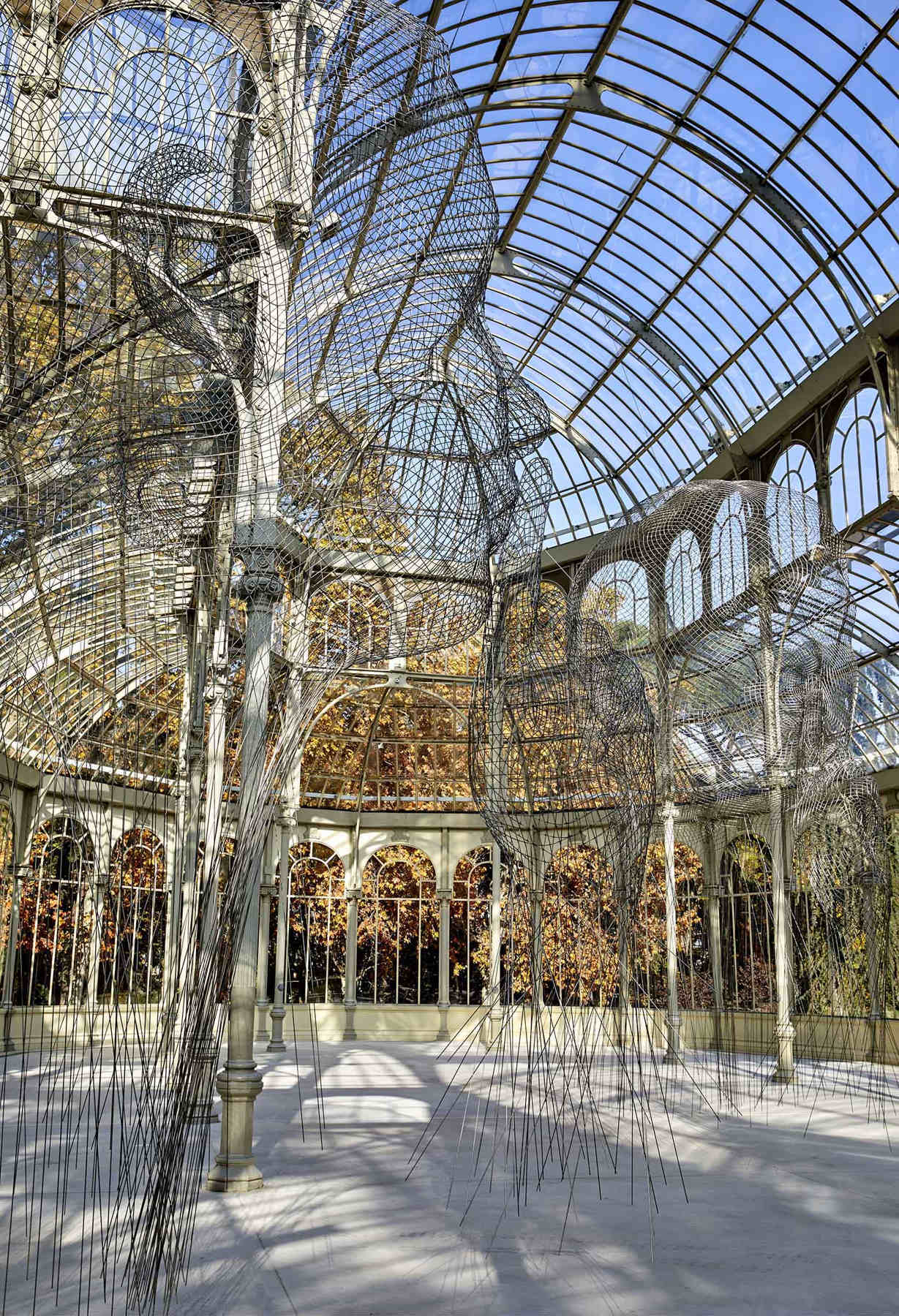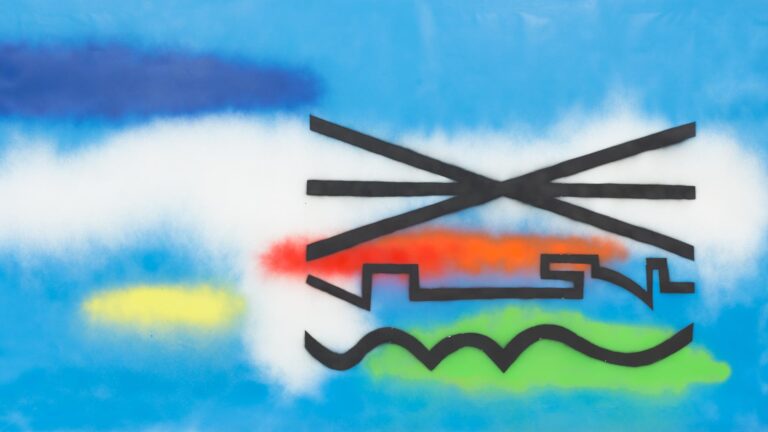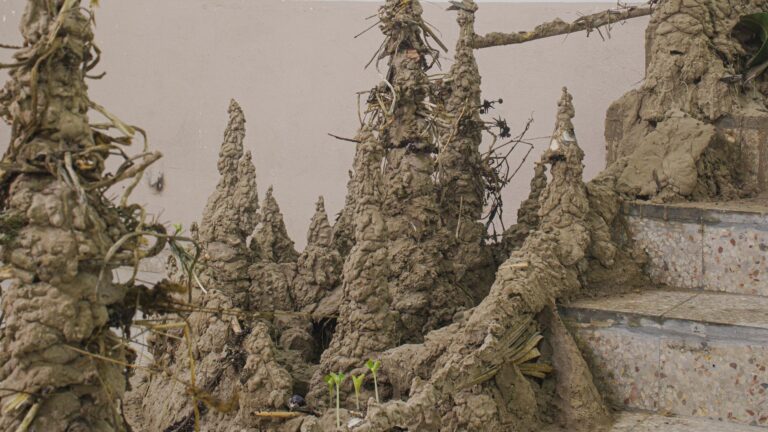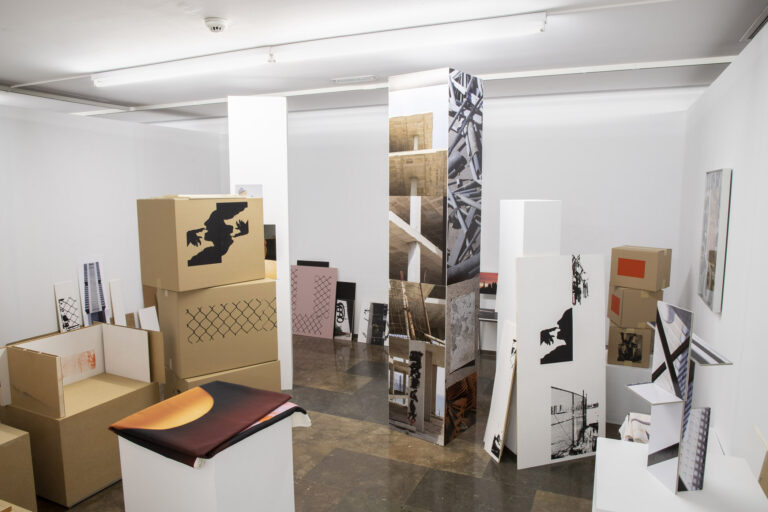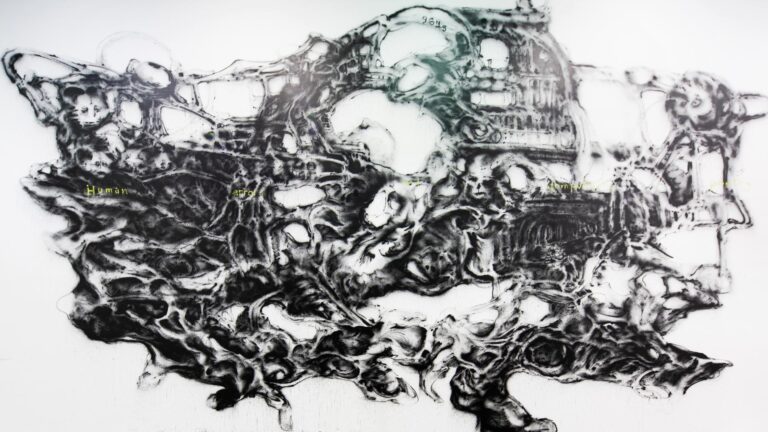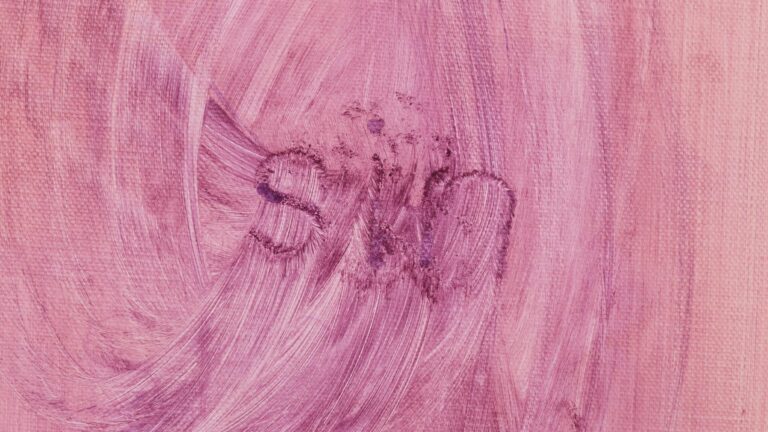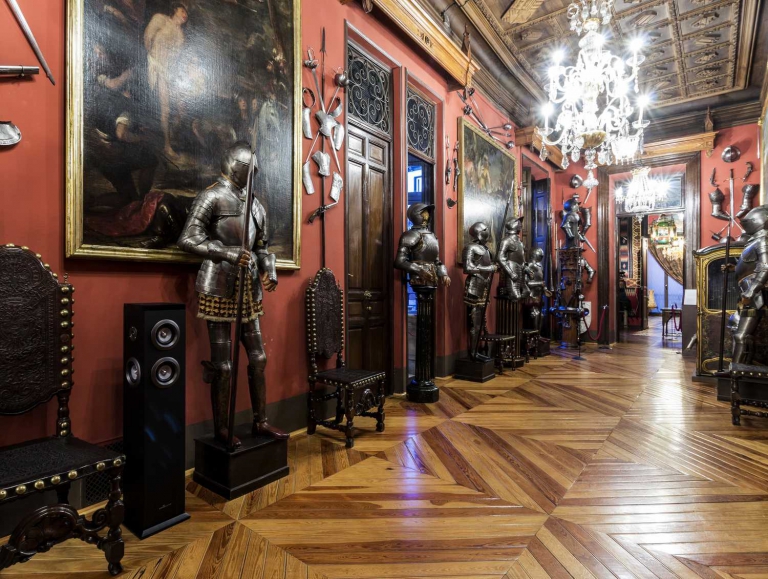Artist: Jaume Plensa
Exhibition title: Invisible
Curated by: João Fernandes
Venue: Museo Nacional Centro de Arte Reina Sofía, Palacio de Cristal, Madrid, Spain
Date: November 16, 2018 – March 3, 2019
Photography: all images copyright and courtesy of the artist and ©Museo Nacional Centro de Arte Reina Sofía, Madrid
Throughout his career as a sculptor, Jaume Plensa (Barcelona, 1955) has drawn on spirituality, the body and collective memory as the primary sources which tie together his visual artwork. Literature, psychology, biology, language and history become strategic tools in the creation of his work, and, through a broad spectrum of materials — steel, cast iron, resin, glass, water, sound — Plensa lends weight and physical volume to the components of the human condition and the ephemeral.
In this instance, the invisible forms the essence of his intervention in the Palacio de Cristal: a group of steel mesh sculptures which take the space to draw the incomplete faces of figures hanging in the air, intersected by light and suspended in time.
As a multidisciplinary artist and one of the foremost Spanish artists internationally, Jaume Plensa has also experimented with etchings, drawing, sound, video and even stage design, collaborating with the company La Fura del Baus on four classical operas, La Atlántida, El martirio de San Sebastián, La condenación de Fausto and La flauta mágica. He has also lived and worked in Germany, Great Britain, France and the USA, making sculptures and installations for public spaces in the aforementioned countries and in many others, such as Italy, Japan, Canada, Sweden and Thailand.
Following his first solo exhibition in 1980 at the Fundació Joan Miró in Barcelona, his work has been displayed in museums worldwide, including the Madison Museum of Contemporary Art in Wisconsin, the MAMC–Musée d’art moderne et contemporain Saint-Étienne Métropole, the EMMA–Espoo Museum of Modern Art, Helsinki, and the Musée des Beaux Arts in Caen. Moreover, he has received numerous national and international awards: the Medaille des Chevaliers des Arts et Lettres from France’s Ministry of Culture in 1993 and the Premi Nacional de Cultura d’Arts Plàstiques from the Autonomous Government of Catalonia in 1997, as well as Spain’s National Visual Arts Award in 2012 and the prestigious Velázquez Award for the Arts in 2013, both presented by Spain’s Ministry of Education, Culture and Sports. In 2005 he was invested Doctor Honoris Causa by the School of the Art Institute of Chicago.
This project is in conjunction with a retrospective at the Museo de Arte Contemporáneo de Barcelona (MACBA) and features works stretching from the 1980s to the present day in a survey which reflects the dialogue, repeated across Plensa’s career, between the representation of the human figure and abstraction.
Invisibles
Suspended in the ethereal space of the Palacio de Cristal, three heads appear to levitate. Their Spanish title, Invisibles, is a plural noun, but it does not rob them of their singularity. Each has a name—Laura, Anna, Rui Rui—but their identities remain anonymous in the enigma that confronts the viewer. They are both visible and invisible. Constructed from a metallic mesh, they gleam randomly as the light strikes them in different ways. Like a visual echo, the group replicates the three-lobed architectural structure of the Palacio de Cristal, the building where they are displayed, while at the same time reproducing the way its iron and steel architecture is integrated into Retiro Park. Its weight becomes the unfinished dimension of the metal wires that spread out to suggest the absent bodies.
In the history of sculpture, the representation of a head was an invariable convention until Pablo Picasso subverted it in 1906 with his Woman’s Head (Fernande). From its origins in funeral rites to its use as a celebration of the life of a public figure or their power, the head reconciles absence with presence. Its body is missing but not its identity, largely defined by the sculptural gesture that seeks to make it eternal. In Invisibles, Jaume Plensa, the winner of the 2013 Velázquez Prize for the Arts, redefines a tradition and reinvents it. His heads are metamorphoses of the being, highlighting with their transfigurations an identity of the human condition and becoming exercises in memory by breaking into the present through the materiality that configures them. There is an alterity between being and appearing, a permeability between similitude and difference that defines their complexity.
The monumentality of the figures contrasts with an interplay of transparencies that makes them into palimpsests of the mesh that defines them, as well as of the light that bathes them. Revealed in them through thousands of concave and convex forms are the processes of modeling and metamorphosis undergone by the real people who served as their models. By combining the draftsmanship of the artist’s hand with the complex logarithmic operations of a computer program devised specially for the characteristics of the sculptor’s work, a tensión is constructed between abstraction and figuration. The sculptures invite us to move silently around them—among their materiality and immateriality—to discover their details and their secrets, the interplay of line and light. Absence is transformed into the presence of these sculpture-events, epiphanies that question our sense of place to become revelations of the tangible and intangible. Appearances and disappearances. An enigmatic memory of our time.
-João Fernandes, Curator
Jaume Plensa, Invisible, 2018-2019, exhibition view, Museo Nacional Centro de Arte Reina Sofía, photo: Joaquin Cortes/Roman Lores
Jaume Plensa, Invisible, 2018-2019, exhibition view, Museo Nacional Centro de Arte Reina Sofía, photo: Joaquin Cortes/Roman Lores
Jaume Plensa, Invisible, 2018-2019, exhibition view, Museo Nacional Centro de Arte Reina Sofía, photo: Joaquin Cortes/Roman Lores
Jaume Plensa, Invisible, 2018-2019, exhibition view, Museo Nacional Centro de Arte Reina Sofía, photo: Joaquin Cortes/Roman Lores
Jaume Plensa, Invisible, 2018-2019, exhibition view, Museo Nacional Centro de Arte Reina Sofía, photo: Joaquin Cortes/Roman Lores
Jaume Plensa, Invisible, 2018-2019, exhibition view, Museo Nacional Centro de Arte Reina Sofía, photo: Joaquin Cortes/Roman Lores
Jaume Plensa, Invisible, 2018-2019, exhibition view, Museo Nacional Centro de Arte Reina Sofía, photo: Joaquin Cortes/Roman Lores
Jaume Plensa, Invisible, 2018-2019, exhibition view, Museo Nacional Centro de Arte Reina Sofía, photo: Joaquin Cortes/Roman Lores
Jaume Plensa, Invisible, 2018-2019, exhibition view, Museo Nacional Centro de Arte Reina Sofía, photo: Joaquin Cortes/Roman Lores
Jaume Plensa, Invisible, 2018-2019, exhibition view, Museo Nacional Centro de Arte Reina Sofía, photo: Joaquin Cortes/Roman Lores
Jaume Plensa, Invisible, 2018-2019, exhibition view, Museo Nacional Centro de Arte Reina Sofía, photo: Joaquin Cortes/Roman Lores
Jaume Plensa, Invisible, 2018-2019, exhibition view, Museo Nacional Centro de Arte Reina Sofía, photo: Joaquin Cortes/Roman Lores
Jaume Plensa, Invisible, 2018-2019, exhibition view, Museo Nacional Centro de Arte Reina Sofía, photo: Joaquin Cortes/Roman Lores
Jaume Plensa, Invisible, 2018-2019, exhibition view, Museo Nacional Centro de Arte Reina Sofía, photo: Joaquin Cortes/Roman Lores
Jaume Plensa, Invisible, 2018-2019, exhibition view, Museo Nacional Centro de Arte Reina Sofía, photo: Joaquin Cortes/Roman Lores
Jaume Plensa, Invisible, 2018-2019, exhibition view, Museo Nacional Centro de Arte Reina Sofía, photo: Joaquin Cortes/Roman Lores
Jaume Plensa, Invisible, 2018-2019, exhibition view, Museo Nacional Centro de Arte Reina Sofía, photo: Joaquin Cortes/Roman Lores
Jaume Plensa, Invisible, 2018-2019, exhibition view, Museo Nacional Centro de Arte Reina Sofía, photo: Joaquin Cortes/Roman Lores
Jaume Plensa, Invisible, 2018-2019, exhibition view, Museo Nacional Centro de Arte Reina Sofía, photo: Joaquin Cortes/Roman Lores
Jaume Plensa, Invisible, 2018-2019, exhibition view, Museo Nacional Centro de Arte Reina Sofía, photo: Joaquin Cortes/Roman Lores
Jaume Plensa, Invisible, 2018-2019, exhibition view, Museo Nacional Centro de Arte Reina Sofía, photo: Joaquin Cortes/Roman Lores
Jaume Plensa, Invisible, 2018-2019, exhibition view, Museo Nacional Centro de Arte Reina Sofía, photo: Joaquin Cortes/Roman Lores
Jaume Plensa, Invisible, 2018-2019, exhibition view, Museo Nacional Centro de Arte Reina Sofía, photo: Joaquin Cortes/Roman Lores
Jaume Plensa, Invisible, 2018-2019, exhibition view, Museo Nacional Centro de Arte Reina Sofía, photo: Joaquin Cortes/Roman Lores
Jaume Plensa, Invisible, 2018-2019, exhibition view, Museo Nacional Centro de Arte Reina Sofía, photo: Joaquin Cortes/Roman Lores
Jaume Plensa, Invisible, 2018-2019, exhibition view, Museo Nacional Centro de Arte Reina Sofía, photo: Joaquin Cortes/Roman Lores
Jaume Plensa, Invisible, 2018-2019, exhibition view, Museo Nacional Centro de Arte Reina Sofía, photo: Joaquin Cortes/Roman Lores
Jaume Plensa, Invisible, 2018-2019, exhibition view, Museo Nacional Centro de Arte Reina Sofía, photo: Joaquin Cortes/Roman Lores
Jaume Plensa, Invisible, 2018-2019, exhibition view, Museo Nacional Centro de Arte Reina Sofía, photo: Joaquin Cortes/Roman Lores
Jaume Plensa, Invisible, 2018-2019, exhibition view, Museo Nacional Centro de Arte Reina Sofía, photo: Joaquin Cortes/Roman Lores



















